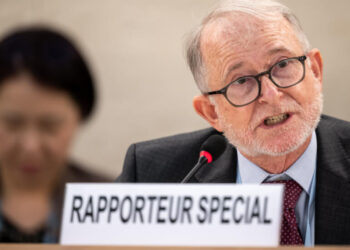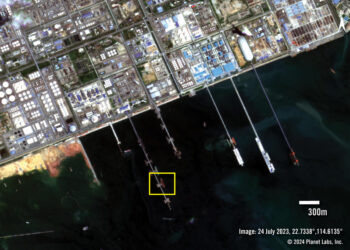Human Lives Human Rights: After the imposition of economic sanctions upon the Islamic Republic of Iran, concerns were raised about potential public health implications, and in particular, access to drugs.
The sanctions were expanded and reached their height by targeting the banking system and the Central Bank of Iran (CBI) in 2011 and 2012, respectively.
There were many reports of drug shortages and public concern about patients’ difficulties in accessing essential drugs.
Adequate access to drugs depends on a myriad of individual and systemic factors that include: individual need and demand for drugs; availability of drugs in the health sector; and appropriate distribution, prescribing and affordability of drugs at the time of use.
The negative impact of economic hardship on health systems and public health has been reported in several countries, regardless of the source of the hardship.
Despite the claim that sanctions only target political aspects, some studies have suggested that they may affect the general population.
Although countries may use a plethora of policies to avert the negative impact of economic hardship on health systems and access to drugs, such policies may not succeed in ensuring continuation of access at the level achieved without economic hardship.
NCD drugs have a critical role in attaining universal health coverage, which ensures access to effective, high-quality and affordable health services.
According to the framework introduced by WHO, there are 4 factors that affect access to medicines: rational selection and use of medicines, affordable prices, sustainable financing and reliable health and supply systems.
Economic sanctions can influence the size of an economy and lead to a downturn through limitation of import and export activities and creation of difficulties in financial transactions.
Consequently, countries under economic sanctions will face a lack of sources in different areas including health, and several studies have illustrated direct and indirect impacts of the economic crisis on public health.
Economic sanctions can also lead to inflation, decreased household spending and health insurance system dysfunction (due to financial pressure as a result of increasing costs).
Although the Islamic Republic of Iran has its own domestic pharmaceutical industry that produces a large proportion of drugs for NCDs, and despite growth in recent years, it is still dependent on imported drugs, raw materials and intermediates.
Import restrictions cause problems for the health sector in ensuring a sustainable supply system.
Despite imposition of economic sanctions against other countries in recent decades, there is little to no robust research evidence assessing the impact of sanctions on access to drugs.
In this study, we used interrupted time series analyses to assess the impact of economic sanctions on access to NCDs medicines in the Islamic Republic of Iran.
As NCD drugs usually follow steady trends in utilization, any significant change could be a result of problems in their supply chain.
To obtain a better picture of the impact of economic sanctions on access to drugs, we selected a sample of therapeutic groups based on the following criteria.
More prevalent diseases. Due to high utilization of drugs for such diseases, any drug shortages will have a negative impact on public health.
Requirement for expensive imported drugs, to assess the impact of sanctions on importation.
Existing domestic drug production, to assess the degree of independence of the domestic pharmaceutical industry.
Existence of reports about drug shortage.
The drugs that were available in the Iranian pharmaceutical market before 2010 were extracted from the national pharmaceutical sales statistics database (in Farsi known as: Amarnameh Daroii Iran) for selected NCD drugs. This was to ensure that the drugs were on the market prior to the sanctions.
Monthly sales data for 2008–2013 were gathered for all important drugs for diabetes, asthma and multiple sclerosis.
Cancer drugs were selected using a random stratified approach in which volume of sales, monetary value of sales, and domestic production or import of drugs were used for stratification.
Data analysis
Our sample included 68 monthly data from 2008 to 2013; that is, 36 months before and 32 after the banking system sanctions, and 48 months before and 20 after the CBI sanctions.
This enabled us to assess the immediate and gradual effects of sanctions on access to drugs using interrupted time series analysis. Several diagnostic analyses were conducted.
The Durbin–Watson parameter between 1.88 and 2.08 was acceptable in this model and parameters out with this range were corrected using ARIMA (autoregressive integrated moving average) models.
We used the Dicky–Fuller test, and to assess heteroscedasticity in the residuals, the White test was applied. When heteroscedasticity was detected, the generalized least squares technique was used.
The impact of each sanction in 2011 and 2012 was assessed separately. Markov and Chaw breakpoint tests were applied to determine which sanction had the greatest impact on drug availability.
As the sale of drugs in the first month of each year (in Iranian calendar) significantly reduced due to the New Year holidays in the Islamic Republic of Iran, it was accounted as a dummy variable in the model.
Results
Twenty-six drugs (as identified according to ATC classification and International Nonproprietary Names) were entered in the model (Table1): 14 had both domestic and imported types; 9 were solely imported with no local production; and the rest were produced locally.
There was a significant reduction in the availability of 13 drugs, of which 6 were solely imported. The availability trends of these 13 drugs are shown in Figure 1 (diabetes and asthma) and Figure 2 (cancer).
The average use of 26 samples based on October and November in each year is shown in Table 2. Ten other drugs showed reduced availability, although the reduction was not significant.
The results of time series analysis for each therapeutic group were as follows.
Diabetes group
The thiazolidinedione’s were produced domestically, whereas the other drugs had both domestic and imported types (Table 3).
The generalized least squares technique was applied for thiazolidinedione’s due to heteroskedasticity in the residuals.
While there were no changes in availability of the 5 drug groups after banking system sanctions, 2 (sulfonylureas and other blood glucose lowering agents) demonstrated gradual reduction after CBI sanctions.
No immediate reduction in availability was observed in this group.
Asthma group
Both domestic and imported types of all drugs were available (Table 3).
The interrupted time series models for anticholinergics after both sanctions and adrenergics in combination with anticholinergics after the banking system sanctions were not significant, so their availability could not be assessed.
The availability of 2 drug groups was reduced during sanctions. Selective β2-adrenoreceptor agonists were affected by both sanctions and showed gradual changes in availability.
No immediate reduction in availability was observed for any of the drugs.
Multiple sclerosis group
Interferon β1a had both domestic and imported types, whereas merely imported type of interferon β1b had only an imported type before 2010 (Table 3).
Although the availability of both interferons was reduced after the sanctions, the results were not significant.
Cancer group
Two of the 14 drugs were produced domestically; 4 were produced domestically and imported; and 8 were available as imported products only (Table 3).
Regression models for daunorubicin after both sanctions and cytarabine after CBI sanctions were not significant, so their availability could not be assessed.
Also, due to the abnormality of residuals in the raloxifene model after the CBI sanctions, the impact was not assessed.
The availability of 9 drugs was reduced: 3 after the banking sanctions; 3 after the CBI sanctions; and 3 showed cumulative reductions after both sanctions.
Of these 9 drugs, 6 were only available on the market in imported forms (i.e., no local production).
Interferon α2b and cytarabine demonstrated immediate changes and the rest shown gradual changes in availability (Table 3). Four other drugs had reduced availability but the change was not significant.
We observed significant changes in the market availability of half the drugs studied. While both sanctions resulted in significant shortages, the CBI sanctions on their own resulted in several additional shortages.
Six of the affected drugs were only available as imports and not produced by local companies; 1 was produced domestically and there was no imported type on the market; and both domestic and imported types of the other drugs were present.
Long-term reduction in drug availability was more frequent than immediate reduction after both sanctions.
Iran FDA tried to maintain the drug supply system by implementing immediate and urgent policies, but continuing sanctions and their impacts on different sectors of the country affected availability of drugs in line with their dependency on imports and foreign transactions.
Cancer and asthma groups showed the greatest reduction in drug availability.
The availability of 10 other drugs was reduced but not significantly, which may have been due to the power of the model.
Our results demonstrated that access to drugs in the Islamic Republic of Iran has been affected by economic sanctions, and national/international news media have broadcast the problems that patients have in accessing drugs, especially for cancer and asthma.
Our study backs the claims that economic sanctions and crises have negative impacts on the health sector and particularly on access to drugs, as suggested in previous studies from the Islamic Republic of Iran and other countries.
Economic sanctions have both direct and indirect negative impacts on health systems, which can be exacerbated by weaknesses in management. In the pharmaceutical sector, economic sanctions, in addition to influencing the size of the economy, could reveal other weak points, including inadequate supply management system, weaknesses in policy-making and public/private opportunism in drug supply.
So, our findings could have been a result of the direct and/or indirect impacts of the economic sanctions. This is confirmed by the fluctuation in drug availability in the Iranian pharmaceutical market since 2011, which has led to lack of drug supply sustainability.
However, some of the shortages could be prevented by appropriate management and applying the right policies. Previous studies have shown that adequate supply chain management can mitigate the negative impacts of sanctions in other countries such as Cuba.
Most of the previous studies that have assessed the impact of economic sanctions and crises on the health sector were descriptive.
The present study is believed to be the first empirical study using robust research methods to measure the impact of economic sanctions on access to drugs.
Time series methods are the strongest models to assess the impact of interventions on nonrandomized samples and this model enabled us to assess both immediate and long-term effects of economic sanctions on access to drugs.
There were limitations to our study, including inability of the method to predict the future; the power of the model in some drug samples; and inability to distinguish between real drug shortages from those caused by demand due to market inflammation (i.e., limitation in drug availability due to over purchasing or overprescribing as a result of concerns over future lack of drugs).
Conclusion
Our study showed that drugs cannot be separated from international economic sanctions and every economic crisis can affect public health and access to health care.
It is worth noting that availability of some of the drugs was not reduced, so policy-makers should consider the whole market to gain an accurate picture.
Sanctions and economic hardship affected access to drugs in two ways.
First, sanctions may hamper an expected increase in the use of drugs. The use of many drugs has been increasing globally (including the Islamic Republic of Iran) as a result of improvements in access or increase in population needs (e.g., due to ageing).
As we used a time-series approach, we were able to measure the likely increasing trends in drug use and the effects of sanctions on it.
Second, sanctions may reduce the absolute availability and use of the drugs. Although we found that the impact of economic sanctions on access to drugs did not follow a general pattern, imported drugs and those with imported raw materials were more likely to be affected.
Countries should have programmes to fortify their domestic pharmaceutical industry and to support them for production of essential drugs from start to finish, and identify alternative sources of supply in times of need.
Appropriate supply chain management can reduce market inflammation, which can exaggerate drug shortages.
We recommend assessing the availability of drugs in other therapeutic groups with other models that can predict the future market if economic sanctions continue.

















